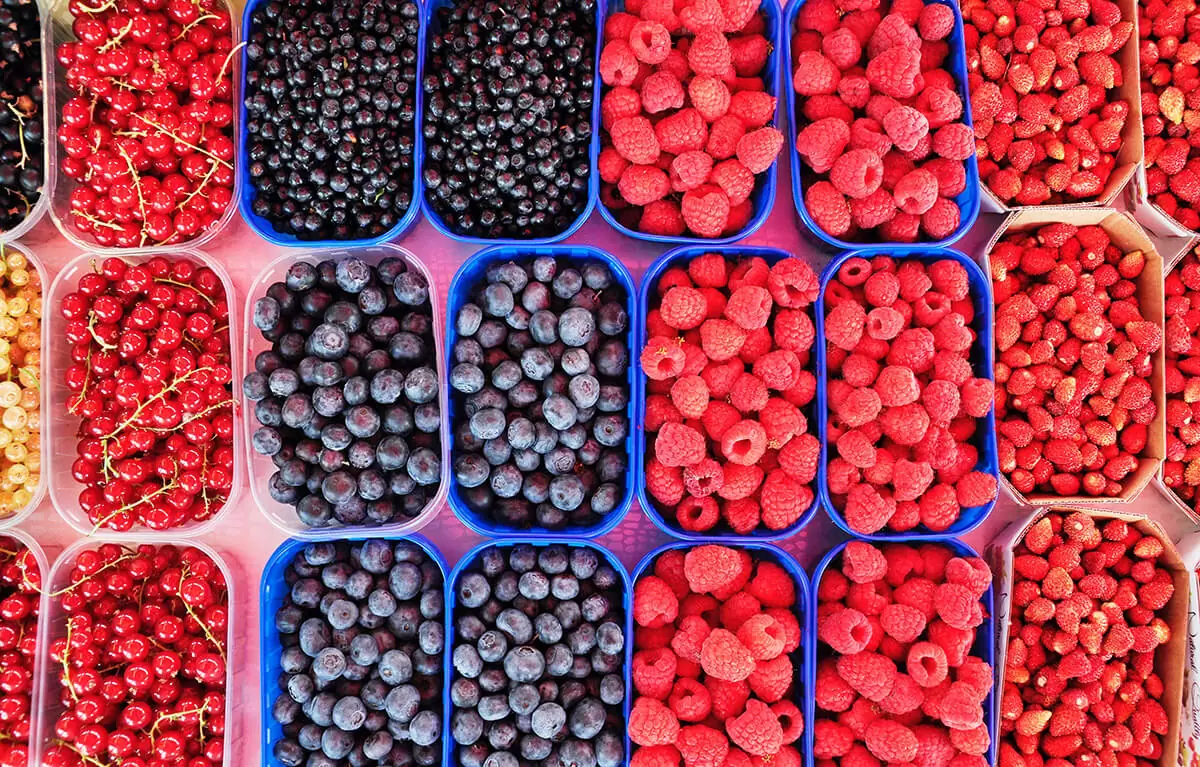Fructose is a sugar that happens naturally in vegetables, fruits, and honey. Experts say that a person unable to absorb fructose is susceptible to fructose intolerance. There are several types of fructose intolerance you should be aware of. Keep reading this article to find out which are the high fructose and low fructose fruits.
What is fructose intolerance?
Those suffering from fructose intolerance are unable to process fructose. As such, they experience symptoms like cramps, bloating, abdominal pain, and diarrhea.
There are different types of fructose intolerance:
- Fructose malabsorption, a type of food sensitivity that prevents you from digesting fructose. Also, it can lead to sensitivities to fermentable oligosaccharides, disaccharides, monosaccharides, and polyols (FODMAPs).
- Essential fructosuria, a recessive disorder in which you lack a liver enzyme responsible for breaking down fructose.
- Hereditary fructose intolerance, a severe type of fructose intolerance characterized by insufficient activity of fructose-1-phosphate aldolase, an enzyme responsible for digesting fructose.
Which are the high fructose fruits?
Dried fruits
Removing water from fruits concentrates their nutrients and boosts their natural fructose content. Indeed, plenty of dried fruits come with vital fructose and fiber combination, like it is the case with plums. Still, half a cup of dried fruits comes with 55 grams of fructose, which is why it should be consumed with caution.

Mangoes
Mangoes are the highest fructose fruits on the market. An average mango has around 30 grams of fructose. Also, they represent a good source of dietary fibers, vitamins C and A.
Grapes
No matter if you opt for green or red grapes, you should know that only one cup feeds your body 25 grams of fructose. Also, grapes are considered the best fructose and fiber combination.
Pears
An average pear can offer between 18 and 20 grams of fructose. And pears are rich in vitamin C and fibers, too.
Which are the low fructose fruits?

Strawberries
Strawberries contain very little sugar. Studies show that eight average-sized strawberries have only 8 grams of sugar. Besides, they are the best source of vitamin C.
Blackberries
Similar to strawberries, berries offer around 4 grams of sugar per 100 grams, along with fibers and proteins. Also, berries are rich in antioxidants, which can help your body fight free radical damage.
Lemons
Lemons or limes are great as in-between meal snacks due to their high content of vitamin C and low content of sugar. Only one lemon has 2 grams of sugar, making it the best replacement for carbonated beverages.
Avocados
Did you know that avocados are almost sugar-free? Well, they represent the best source of fiber and healthy fats, with little to no fructose.
Is there any difference between fructose and glucose combination?
Fructose and glucose are sugars or monosaccharides. The body absorbs them quickly, but fructose can lead to many negative health effects. Anyhow, experts say that limiting your intake of added sugar is more than necessary, no matter the type you use.
What is the effect of fructose on exercise?
Studies show that eating foods like canned fruit, candy, or sweetened yogurt feeds your body high content of fructose, which can lead to diabetes and obesity. Also, high amounts of fructose in the body can increase bad cholesterol. It is believed that exercising regularly can diminish the side effects of fructose. But it is best to limit your fructose intake if you have fructose intolerance.
The bottom line
No matter if you have or not fructose intolerance, it is always best to consume foods with caution. The high fructose and low fructose fruits mentioned above should be part of a healthy meal plan. Also, to keep up your health, it is highly recommended to follow an exercise routine.